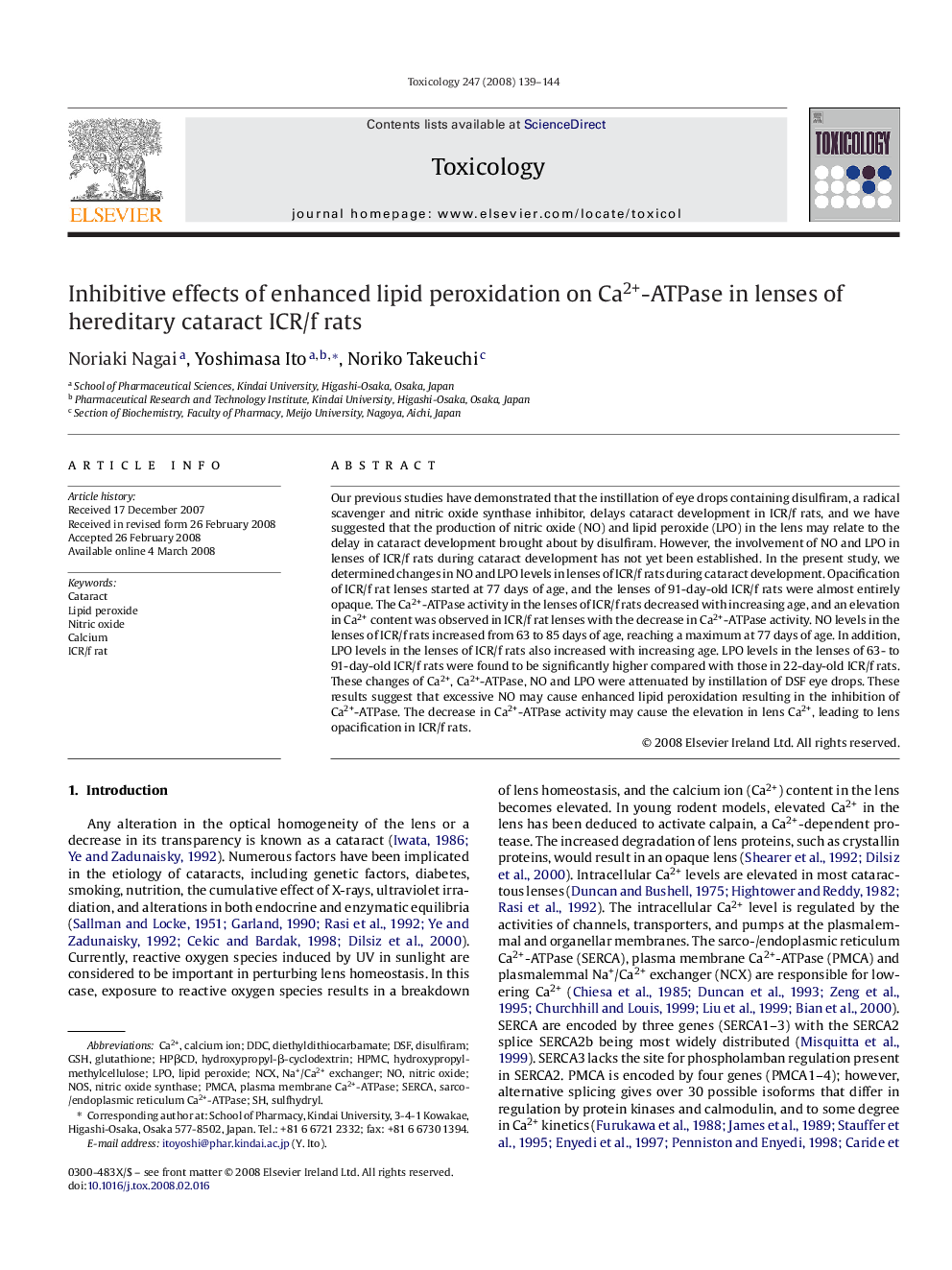| Article ID | Journal | Published Year | Pages | File Type |
|---|---|---|---|---|
| 2596993 | Toxicology | 2008 | 6 Pages |
Our previous studies have demonstrated that the instillation of eye drops containing disulfiram, a radical scavenger and nitric oxide synthase inhibitor, delays cataract development in ICR/f rats, and we have suggested that the production of nitric oxide (NO) and lipid peroxide (LPO) in the lens may relate to the delay in cataract development brought about by disulfiram. However, the involvement of NO and LPO in lenses of ICR/f rats during cataract development has not yet been established. In the present study, we determined changes in NO and LPO levels in lenses of ICR/f rats during cataract development. Opacification of ICR/f rat lenses started at 77 days of age, and the lenses of 91-day-old ICR/f rats were almost entirely opaque. The Ca2+-ATPase activity in the lenses of ICR/f rats decreased with increasing age, and an elevation in Ca2+ content was observed in ICR/f rat lenses with the decrease in Ca2+-ATPase activity. NO levels in the lenses of ICR/f rats increased from 63 to 85 days of age, reaching a maximum at 77 days of age. In addition, LPO levels in the lenses of ICR/f rats also increased with increasing age. LPO levels in the lenses of 63- to 91-day-old ICR/f rats were found to be significantly higher compared with those in 22-day-old ICR/f rats. These changes of Ca2+, Ca2+-ATPase, NO and LPO were attenuated by instillation of DSF eye drops. These results suggest that excessive NO may cause enhanced lipid peroxidation resulting in the inhibition of Ca2+-ATPase. The decrease in Ca2+-ATPase activity may cause the elevation in lens Ca2+, leading to lens opacification in ICR/f rats.
